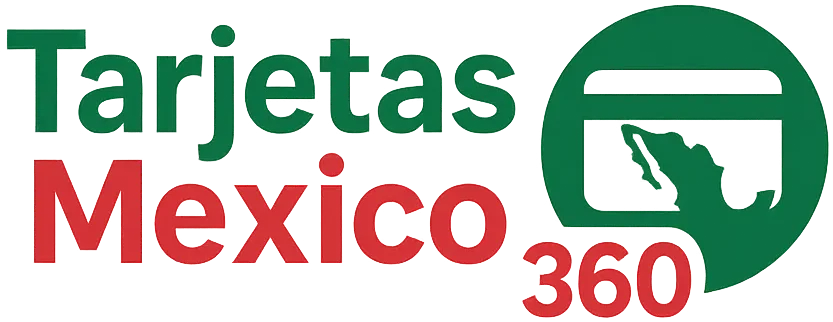Tesla Lease Offers 2025: What You Need to Know
Tesla lease offers 2025 are gaining massive attention from those eyeing an environmentally friendly ride without the commitment of ownership.
Have you ever wondered what makes leasing a Model 3, Y, or S such an enticing option? It’s not just about driving a cutting-edge car; it’s about affordability and flexibility in an ever-evolving market.
We’ve all seen the flashy adverts, but what’s the real deal behind these leases? Diving into the specifics of each model’s offers, it’s apparent that understanding the costs involved, especially the hidden ones, can be quite an eye-opener. Ever checked the fine print on a car lease before?
Stick around as we delve into comparisons of Model 3, Y, and S leases, unravel hidden fees you should know about, and explore what happens when it’s time to hand back the keys. Ready to uncover what lies beneath the allure of Tesla’s latest leasing deals?
Understanding Tesla Lease Options
When it comes to Tesla lease options, potential lessees have an intriguing array of choices that cater to diverse needs and preferences. Each option offers its unique benefits and considerations, making it essential to comprehend the different paths available. Let’s explore some common Tesla leasing routes to better understand what may work for your lifestyle.
Traditional Leasing
In a traditional Tesla lease, you have the opportunity to drive a brand-new Tesla for a set period, usually spanning 24 to 36 months. During this time, you make regular lease payments, and at the end of the term, the car is returned. This option appeals to those who relish the idea of changing cars frequently, as it offers the latest models with the latest features. While mileage limits apply, it’s an excellent choice for those who drive a predictable amount each year.
Balloon Lease
With a balloon lease, occupants benefit from lower monthly payments compared to traditional leasing. This option culminates with a larger ‘balloon payment’ at the end of the term if you wish to own the vehicle. It provides flexibility, as you can return the car or pay the balance to keep it. It’s ideal for individuals anticipating a financial boost down the line or those who prefer lower monthly outlay initially.
Mile Buy-Up
For those worried about exceeding mileage limits, the mile buy-up option is a practical solution. This feature allows you to purchase additional miles at the outset or during the lease term, often at a reduced rate compared to end-of-term charges. It’s a lifesaver for road trip enthusiasts or anyone with unpredictable travel needs.
Each Tesla lease option offers distinct advantages, so identifying your priorities, such as monthly payment budgets, projected mileage, and the desire for vehicle ownership, will guide you toward the best option. With such flexible leasing plans, it’s no wonder Tesla remains an attractive choice for electric vehicle aficionados.
Comparing Model 3, Y, And S Leases
When comparing leases for the Tesla Model 3, Y, and S, there are several factors to consider, each model offering unique benefits and features. Let’s break down the leasing specifics of each model to help guide your decision-making process.
Model 3 Leasing
The Tesla Model 3 is known for being a more affordable entry into the Tesla lineup, making it a very popular choice. Its lease terms generally offer competitive monthly payments, making luxury electric driving more attainable. With efficient performance and advanced technology, it’s ideal for daily commuters seeking a balance between cost and capability. Lease terms often include 10,000 to 15,000 miles per year, providing flexibility for regular driving needs.
Model Y Leasing
The Model Y provides a compelling option for those needing more space without sacrificing performance. It features a roomy interior and higher ride height, making it a fantastic pick for families or individuals who prioritize comfort. Model Y leases typically feature slightly higher monthly payments compared to the Model 3, reflecting its enhanced space and capabilities. Such leases usually also offer all-wheel-drive options, appealing to those in varied driving conditions.
Model S Leasing
The Model S represents the pinnacle of Tesla’s sedan offerings, combining luxury with leading-edge performance. It is the premier choice for those who want the best Tesla experience, albeit with a correspondingly premium lease cost. Model S leases often include numerous customization options, state-of-the-art technology, and are catered towards those seeking a high-performance vehicle with extended range. It’s ideal for enthusiasts who want top-tier performance packed with Tesla’s luxury features.
When comparing these models, consider what you prioritize most: affordability, space, or luxury. Each leasing option provides pathways to enjoy Tesla’s electric innovation while meeting personal and financial preferences.
Hidden Costs You Should Be Aware Of
When considering a Tesla lease, it’s crucial to recognize the hidden costs that may not be immediately obvious but can significantly impact the total cost of leasing. Understanding these can help you plan better and avoid unexpected financial surprises.
Excess Mileage Fees
Most Tesla leases come with set mileage limits, typically between 10,000 to 15,000 miles per year. If you exceed these limits, you may incur additional fees per mile over the limit, which can add up quickly. It’s important to calculate your expected mileage to see if purchasing extra miles upfront might save money.
Wear and Tear Charges
Leased vehicles must be returned in good condition, typically defined as normal wear and tear. Any damage beyond this may result in extra charges. It might be wise to understand what constitutes excessive wear and tear and take necessary precautions to avoid additional costs.
Disposition Fees
Disposition fees are end-of-lease charges for the paperwork and processes involved in selling the car. This fee is standard but varies by leasing company. Knowing this cost upfront can help you budget accordingly and avoid last-minute financial strain.
Early Termination Fees
If your financial or living situation changes, you might want to end your lease early. However, doing so usually incurs a penalty. It’s beneficial to know these fees in advance so you can make informed decisions about the length of your lease commitments.
By being aware of these hidden costs, you can plan your financials more accurately and enjoy your Tesla leasing experience without unexpected expenses down the line.
Tesla Lease End: Conditions And Expectations
Approaching the end of your Tesla lease involves understanding the conditions and expectations to ensure a smooth transition. Knowing what steps to take can help you avoid any unnecessary fees or complications.
Vehicle Inspection
As your lease term nears its end, Tesla will usually require a vehicle inspection. This assessment checks for excessive wear and tear, ensuring the car is in the condition expected at the end of the lease. Addressing minor repairs before this inspection can help avoid additional charges.
Return Process
Returning your Tesla involves specific steps, including making an appointment with your leasing agent. This ensures all paperwork is completed, and any necessary fees are addressed. It’s essential to return all keys and any original accessories, such as chargers, that came with the vehicle.
Purchase Options
If you’ve grown attached to your Tesla, you may have the option to purchase it at the end of your lease. This process involves paying the vehicle’s residual value as predetermined in your lease agreement. Financing options are often available if you choose to buy your leased car.
Lease Extension or New Lease
Not ready to part with your Tesla, or interested in a new one? Some leases offer extension options at similar terms if you wish to keep the vehicle a bit longer. Alternatively, exploring a new lease allows you to enjoy the latest models and technological updates Tesla has to offer.
Understanding these end-of-lease options ensures you’re prepared, whether you choose to return, purchase, or lease a new Tesla.
FAQ – Common Questions About Tesla Lease Offers 2025
What are the typical mileage limits on a Tesla lease?
Most Tesla leases offer mileage limits between 10,000 to 15,000 miles per year. Exceeding these can result in additional fees.
Can I purchase my Tesla at the end of the lease?
Yes, you can purchase your leased Tesla at the end of the term by paying the residual value stated in your lease agreement.
What happens if my Tesla has excessive wear and tear?
If your Tesla shows excessive wear and tear, you may incur extra charges at the end of your lease. It’s advisable to address minor repairs before returning the vehicle.
Are there options to extend my Tesla lease?
Some leases offer extension options at similar terms, allowing you to keep your Tesla for a longer period if needed.
What is a disposition fee in a Tesla lease?
A disposition fee covers the cost associated with processing your leased Tesla’s return. It’s usually paid at the end of your lease.
How do I prepare for my Tesla lease return?
To prepare for your lease return, schedule a vehicle inspection, ensure all accessories are with the car, and coordinate with your leasing agent for a smooth process.






